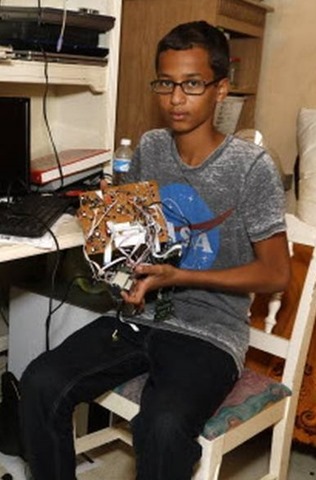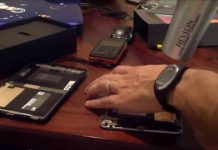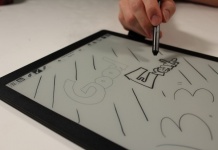 When I shared my gadget bag story to my social media, as I do, I got responses from two different friends (on two different social media networks so they didn’t see each other’s posts) advising me that I had sufficient hardware to be accused of being a bomb maker at a Texas high school. But then, that’s what happens when there’s a big technology story going viral.
When I shared my gadget bag story to my social media, as I do, I got responses from two different friends (on two different social media networks so they didn’t see each other’s posts) advising me that I had sufficient hardware to be accused of being a bomb maker at a Texas high school. But then, that’s what happens when there’s a big technology story going viral.
If you’ve been away from the Internet for the last few days, you probably missed the story of the teen in Irving, Texas, Ahmed Mohammed, who made his own digital clock and brought it to school to show around. Even though, to read the reports now, nobody either at the school or on the local police seriously thought the digital clock was a bomb, the kid ended up getting arrested anyway because it was somehow inconceivable that he could bring to school a scary-looking device with lots of wires without it having been intended to scare people into thinking it was a bomb. (It subsequently came out that the mayor of Irving is well known for his anti-Muslim positions, and he has issued a statement hoping that the publicity will not negatively affect local police in their effort to keep schools safe.)
Happily for Ahmed, his story went viral and he immediately became an Internet cause célèbre. Perhaps because he was seen wearing a NASA T-shirt, he got a scholarship to Space Camp. He even ended up getting invited to the White House to meet President Barrack Obama. That being said, he still plans to change schools. (So would I.)
This story has a little special meaning for me, because my father is a mechanical clock technician himself. He taught himself to fix clocks as a teenager by tinkering with mechanical clocks that drugstores were throwing away by the score. Since they were free promotional items provided by cola manufacturers, the drugstores thought nothing of chucking them in the dumpster when the new electric models came in. (Dad has said more than once he really wishes now that he’d rescued more of those clocks at the time, given how much they’re worth as collectibles now.)
If my father, as a teenager, had brought one of his mechanical clocks in to school to show off, would he have been accused of constructing a time bomb? Well, probably not. It’s easy to tell what an analog clock mechanism does from looking at it. Gears and pendulums and weights make intuitive sense. (And that’s leaving aside the entirely different political background of the era.) But electronic gadgets are all scary-looking with lots of wires, just like bombs are all scary-looking with lots of wires. As I mentioned the other day, we humans tend to be far too suspicious of things we don’t understand.
Even so, the clock might have passed unremarked, or even just gotten the kid sent home without the police being involved, if it weren’t that he also happened to be a member of the current scary ethnicity. Even if there wasn’t any conscious attempt at racial profiling (which seems unlikely, but let’s allow the benefit of the doubt), there would still be that subconscious fear of the Other to contend with. So it turned into the perfect storm of Zero Tolerance crossed with Potential Terrorist Threat, and that this is right around the anniversary of the 9/11 attacks probably didn’t help matters either.
Right at a time when we as a society are trying our hardest to get more kids interested in STEM (science, technology, engineering, and mathematics) disciplines, what happens to a kid who is so interested in engineering that he brings a technology project to school? He gets arrested, taken away in handcuffs, and interrogated for hours.
“They searched me, they took a fingerprint and mugshots of me, and they searched me until my parents came….I couldn’t call my parents during interrogation,” Mohamed later explained. “It made me feel like I wasn’t human. It made me feel like a criminal.”
The Texas chapter of the ACLU contends that this violated Ahmed’s legal civil rights. Even now, the clock remains in police custody. “I want it back with my humility,” Ahmed says.
And if something so simple as a digital clock “could be” a bomb, what about the kid who makes his own computer, e-reader, or some other project with a Raspberry Pi or other do-it-yourself CPU whose purpose isn’t immediately obvious?
And this brings me back to my friends’ interpretation of my gadget bag. From my point of view, there isn’t anything odd about me having all that technological junk. It’s just what I’ve accreted over the years. But who knows what might trigger suspicion in the wrong situation? I’ve worked jobs where I couldn’t have a smartphone on me because they have a camera. I’ve gone to places where I had to leave my Gerber multi-tool on my bike because it’s a scary knife.
But even if someone did get suspicious of me, they’re not likely to think I’m a terrorist. I have that advantage (or privilege, if you will) kind of baked in. This also poses a conundrum for trying to bridge the digital divide when it comes to assisting people of other ethnicities. A white kid with a smartphone is just a kid doing email or social networking. If he takes a photo, it’s probably just going to show up on Twitter or Instagram. But might a brown kid be taking pictures of a potential terrorist target? That’s just how the thinking goes, and it’s so ingrained that it’s hard to change.
Hopefully this controversy doesn’t keep Ahmed Mohamed from following his engineering dreams, and it brings some more awareness to the issue. If it is going to be resolved, it’s not going to happen overnight.
Incidentally, if you’re interested in making your own digital clock, Wired has some links to instructions.

































Then, too, K-12 schools and especially libraries have been taking up the “maker movement” where kids are encouraged to “make” all sorts of interesting things right then and there in the school or library.
I am currently playing around with a little circuit board called an Arduino plus a simplifying piggy-back board that works with Roger Wagner’s HyperStudio application for OS X.
A thing doesn’t have to have wires to be a bomb or a gun or some other instrument for killing, sickening and maiming people. There’s a lot to be afraid of if one tends toward paranoia.